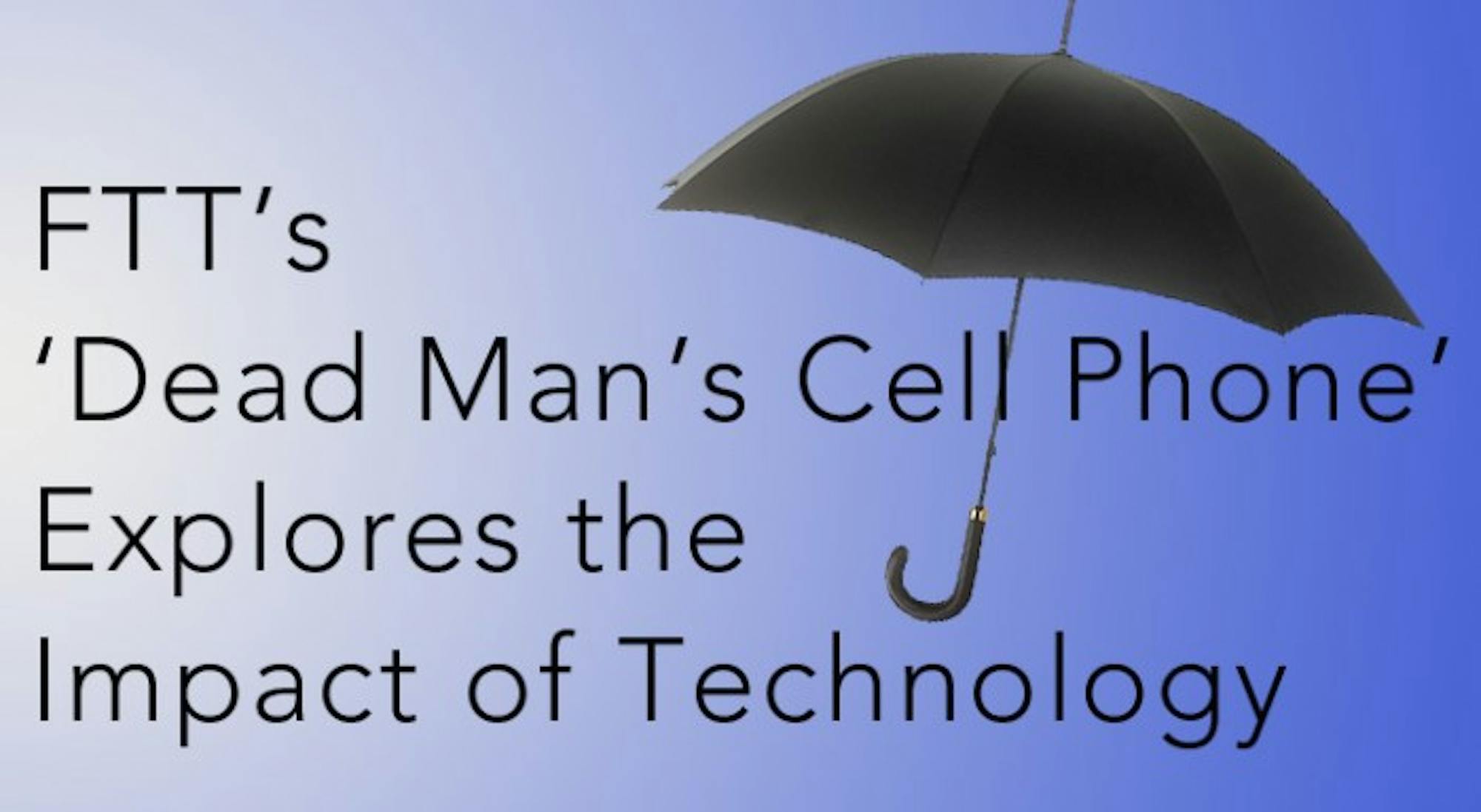
“Dead Man’s Cell Phone,” a play by Sarah Ruhl, explores how the proliferation of electronic devices has affected interpersonal interactions and whether they actually help us stay more connected. The plot follows the main character, Jean, through her experience of, as you may have guessed, finding a dead man’s cell phone.
In a sentence, the story follows Jean while she meets the old friends and family of the dead man, named Gordon, by answering his phone, lying to each one about Gordon’s last moments in an effort to build up his character.
The play also touches on the morality of the black market for organs, strained familial and marital relationships and ponders life after death. The plot moves from topic to topic at a breakneck pace, so viewers need to stay attentive.
Director Kevin Dreyer chooses to present the play with a sparsely decorated set which lends itself to the imagination of the audience. This gives the play a very modern and cutting edge feel, which is appropriate for such a contemporary subject.
While this set design fits in with settings such as the café, airport or afterlife, other settings, such as the notary shop feel a bit underdone with this minimalist approach.
In between scenes, the stage crew criss-crosses the stage in a rigidly organized fashion reminiscent of an old hand- and foot-operated loom. This mechanical movement furthers the modern feel of the play, an interesting juxtaposition to its message about how technology is isolating humans.
During these times between scenes, the background music is oddly reminiscent of the Ghostbusters theme song, which would have fit better with a murder mystery play.
The play begins to live up to its designation as a comedy about halfway through the first act, during a very awkward dinner between Jean and the family of the deceased Gordon. There are many genuinely funny lines in this play, but long pauses between dialogue at times may leave the audience unsure of whether to laugh or wait for an impending line.
The second act starts on a high note, when Gordon gets his first spoken contribution to the performance with a long monologue to begin the act. Anthony Murphy, who plays Gordon, stands out among many strong actors in the play beginning with this monologue. Gordon’s mannerisms seem very natural, and his posture and tone of voice fit his controversial character perfectly. Gordon’s reintroduction to the performance also adds some much-needed background to the story and the additional sub-plot of his unsavory career.
The second act also demonstrates the theme of technology isolating people from one another more clearly than the first, which is largely spent developing characters and setting the stage for an acceleration of the storyline.
Jean becomes even more caught up in her efforts to cleanse Gordon of any character flaws in the eyes of his family and soon finds herself drawn into a wild chase to absolve her dead friend of his wrongs, all the while becoming more attached to the technology that got her into this situation.
This attachment seems to be building up to a falling out with Jean’s love interest in the story, until an unexpected and strange fight scene and an out-of-body experience in which Jean meets Gordon face to face.
The play then turns again to focus on its original storyline and tie up loose ends created by the brief excursion.
The play manages to tell a lengthy story while only using five characters, which allows for ample dialogue between characters and substantial development.
The idea of the play is interesting, but whether or not this story will make viewers spurn technology in favor of embossed letters, as discussed in the show, is up for debate.
The performance runs April 15-19 in the Decio Theater of Debartolo Performing Arts Center. Tickets are $7 for students.













